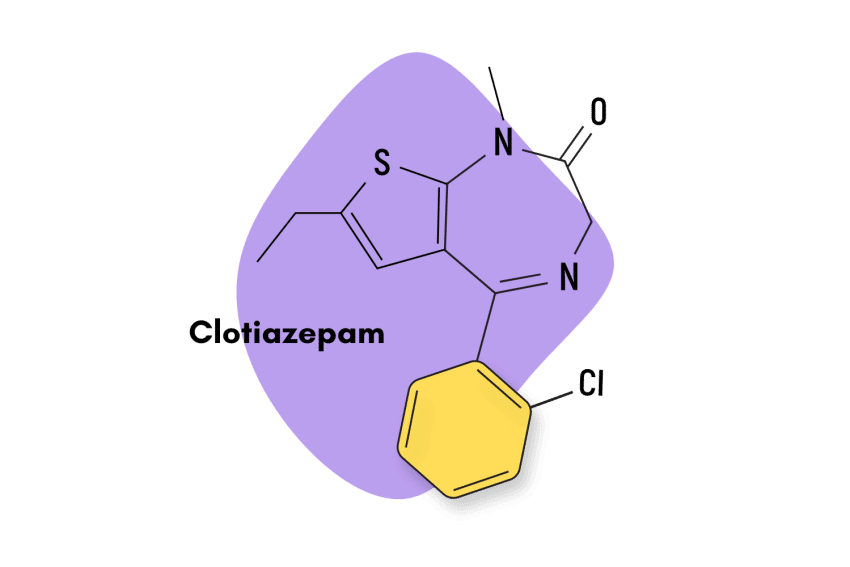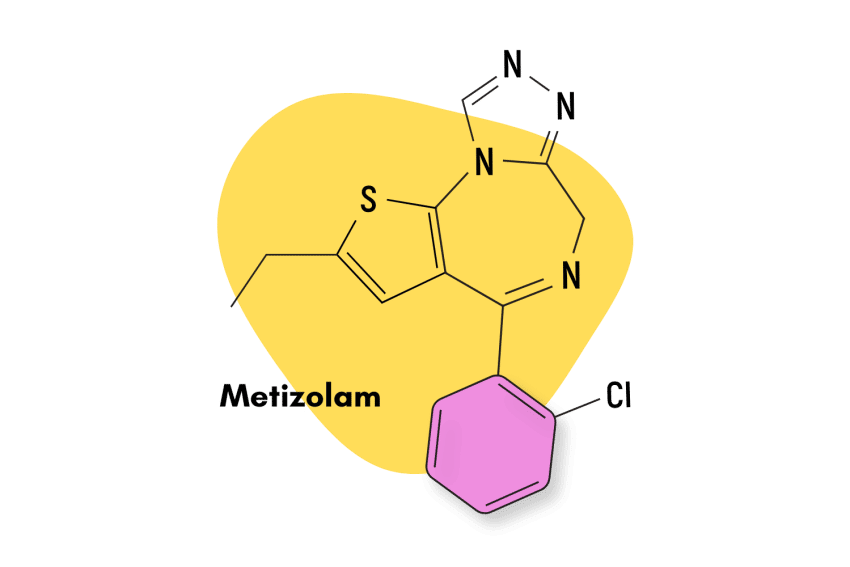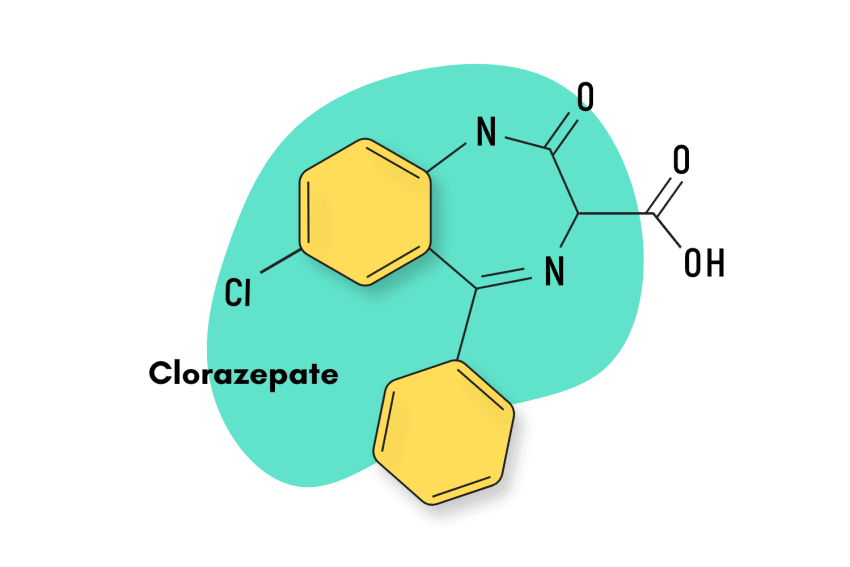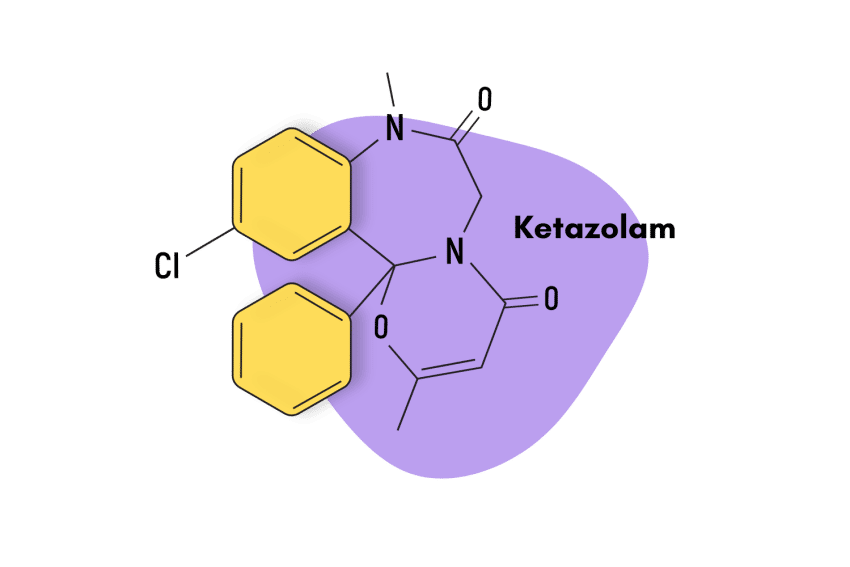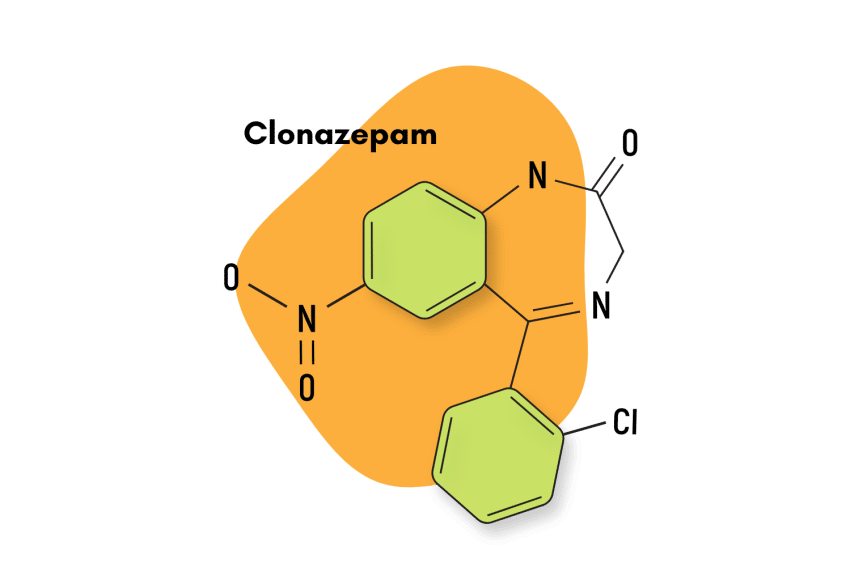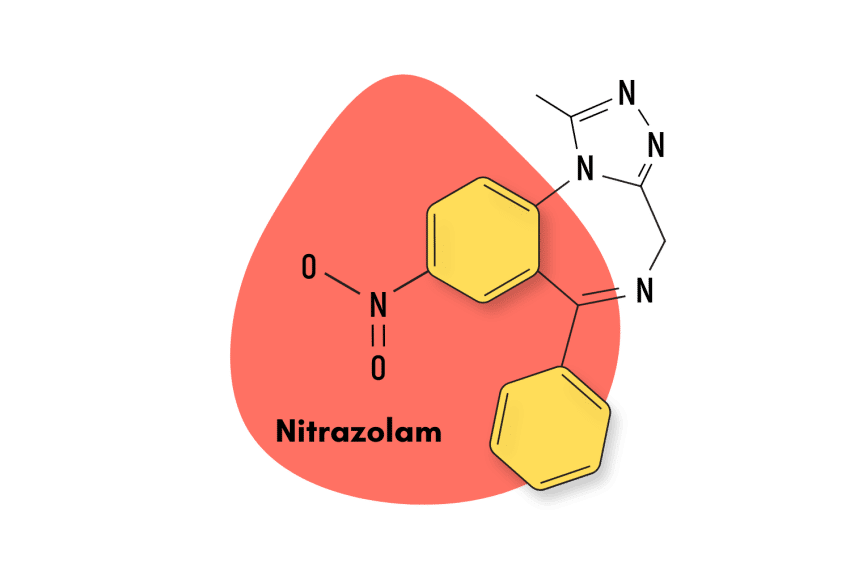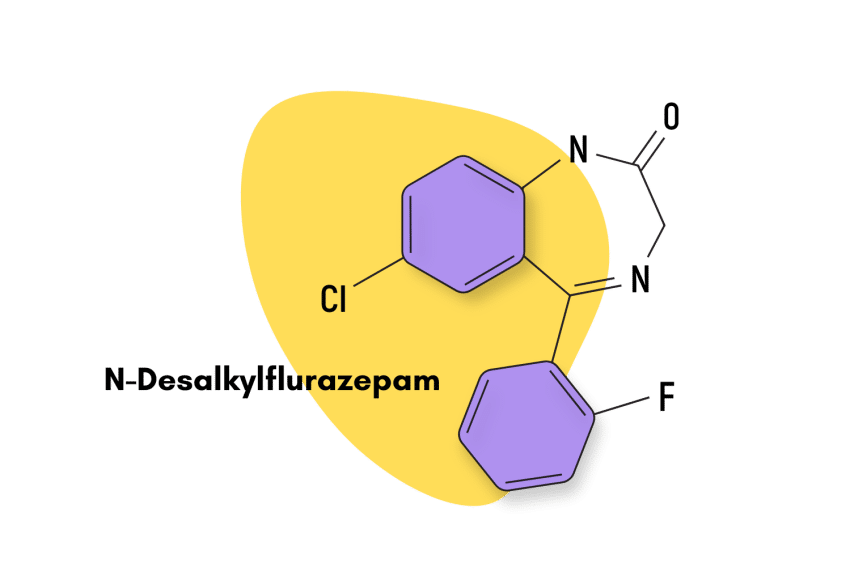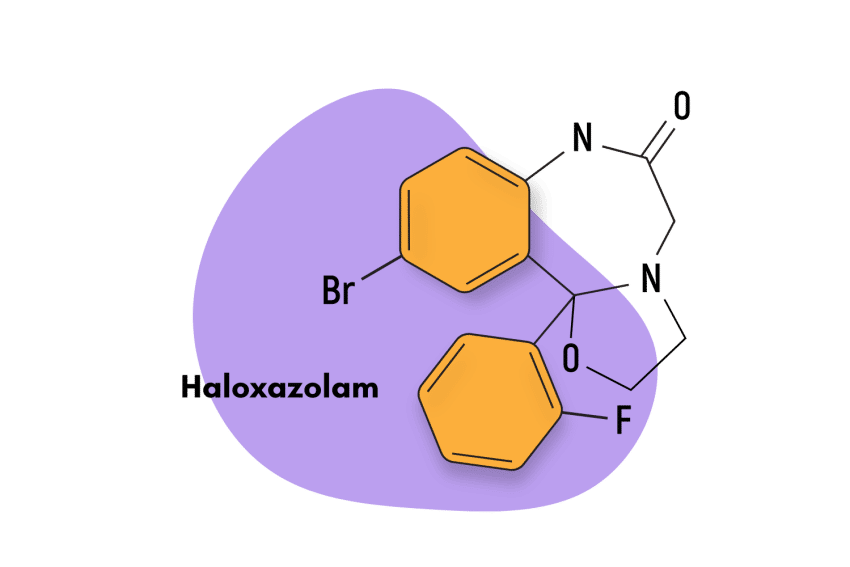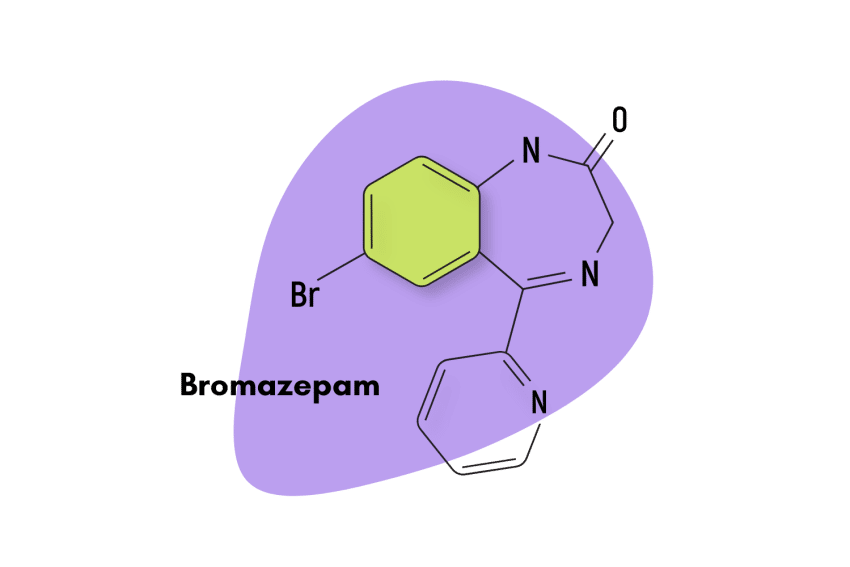Nortetrazepam: Fact Sheet & Harm Reduction Guide
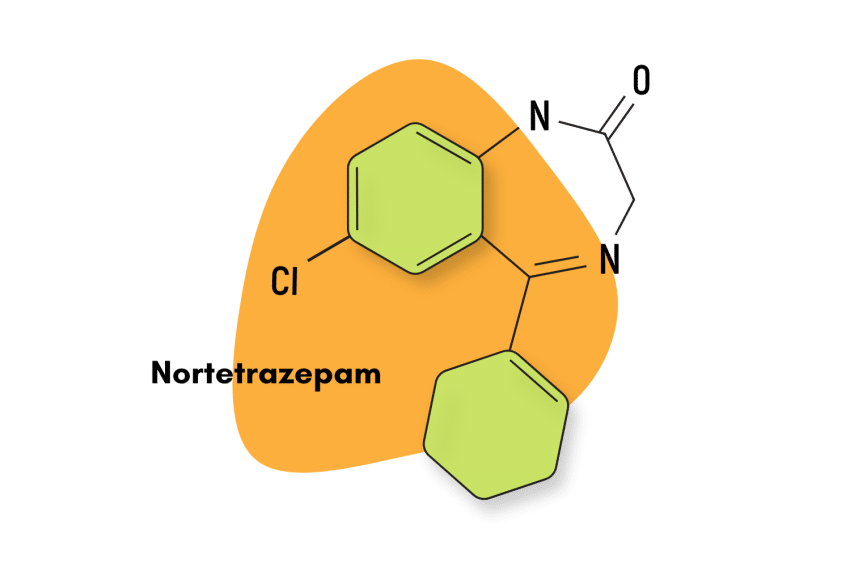
Nortetrazepam is a benzodiazepine derivative of the “classical” 1,4- subtype. It also happens to be one of the major active metabolites of tertrazepam (Musaril). Sometimes nortetrazepam can be found on designer drug markets, but it doesn’t seem to have much popularity as it is rarely detected by public health agencies.
The only clinical use for nortetrazepam came about through its status as a metabolite to tertrazepam. However, once tertrazepam was pulled from markets due to its tendency to cause immunological toxicity, nortretrazepam was left without a purpose. As such, specific research on nortretrazepam is scant.
Nortetrazepam Specs
| IUPAC Name | 7-chloro-5-(cyclohexen-1-yl)-1,3-dihydro-1,4-benzodiazepin-2-one |
| Metabolism | Unknown |
| Duration of Effects | Unknown |
| Status | Research Chemical |
| Common Dosage | Unspecified |
| PubChem ID | 166581 |
| CAS# | 10379-11-0 |

Benzodiazepine Dosage Equivalency Calculator
**Caution:** Benzodiazepines have a narrow therapeutic window. Dose equivalents may not be accurate in higher doses.
This calculator does not substitute for clinical experience and is meant to serve only as a reference for determining oral benzodiazepine equivalence.
Please consult a medical practitioner before taking benzodiazepines.
How Does Nortetrazepam Work?
As a 1,4- benzodiazepine, nortetrazepam exerts its effects through its interactions with GABA-A receptors. Benzodiazepines are GABA-A receptor agonists, which means they potentiate the inhibitory receptor response of GABA, thus exerting a depressive effect on the central nervous system (CNS).
Benzodiazepines do this by increasing the opening frequency of the chloride channel located in the neurons. This allows chloride atoms to enter and hyperpolarize the neuron. The hyperpolarization of the neuron’s membrane potential alters the electric charge inside it and makes it less likely the neuron will fire an action potential. Reduced action potential activity means reduced overall brain activity. This inhibitory effect gives benzodiazepines their anxiolytic, hypnotic, sedative, muscle relaxant, and anticonvulsant effects.
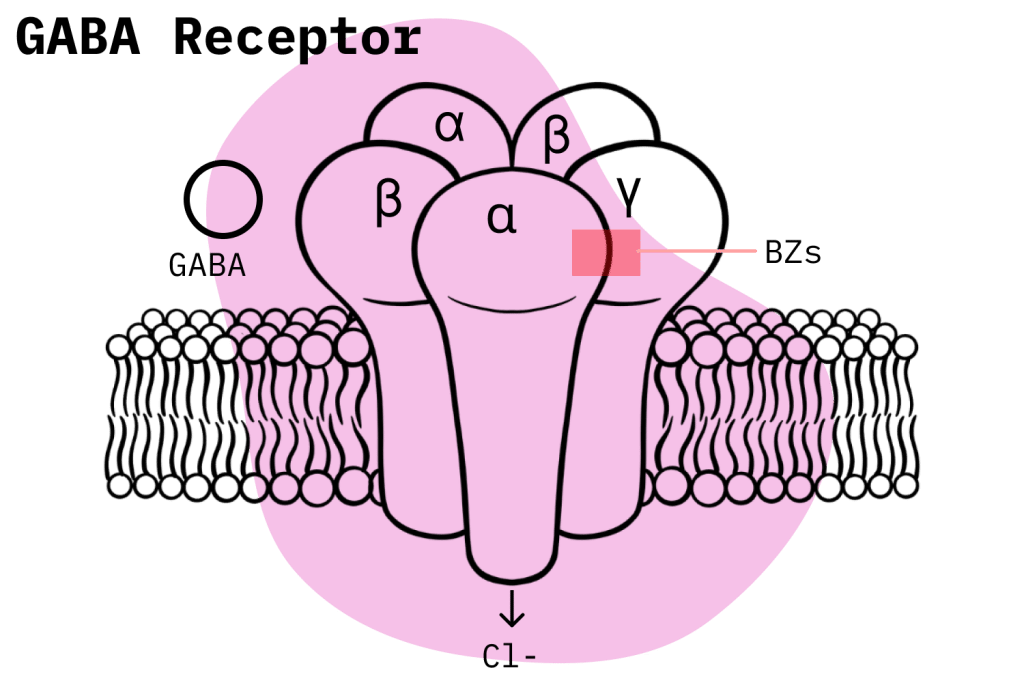
This GABA-mediated pathway is the primary mechanism of action of virtually all non-atypical benzodiazepines. The shared pharmacology of this pathway means that benzodiazepines have more commonalities than differences when it comes to their effects, although there are still meaningful differences, of course, mostly with respect to factors such as pharmacokinetics, bioavailability, and potency.
Nortetrazepam Specifics
Researchers have not paid much attention to nortetrazepam, so we have no meaningful data on its specific effects profile. Still, when dealing with metabolic byproducts, researchers usually assume there’s at least some degree of similarity with the parent compound, in this case, tertrazepam.
The profile of tetrazepam is well known. The compound has potent anxiolytic, anticonvulsant, and antidepressant action with much lower sedative or hypnotic qualities than other benzodiazepines. We can likely assume nortetrazepam is somewhat similar in terms of the relative strength of its properties, but at the same time, there is research to suggest that nortetrazepam does not have much pharmacological action.
According to a study that examined the biotransformation and pharmacokinetics of tertrazepam in man, the substitution of the phenyl moiety in the 5-position by a cyclohexenyl ring in that compound results in a different metabolism when compared to other benzodiazepines, and this different metabolic pathway is the reason why only very small levels of active metabolites are present in the results. Therefore it seems reasonable, at least from the pharmacokinetic point of view, to attribute the pharmacologic activity of tetrazepam mainly to the parent drug [1].
Is Nortetrazepam Safe? Risks & Side Effects
Tertrazepam is not listed as an approved medication, but if it was, it would almost certainly be classified as a Schedule IV compound under the Controlled Substances Act. The shared mechanism of action utilized by benzodiazepines means they hold largely the same risk profile with only slight differences between them.

In general, benzodiazepines, when used in strict accordance with the instructions of a given prescription, are relatively safe in that they generally do not cause severe health events or fatalities. However, the reality of the situation is more complicated than their classification under the CSA might suggest. When misuse is factored into the equation, the risk level of benzodiazepines rises considerably.
If more information about nortetrazepam were available, we would be able to compare it to other benzodiazepines, but at the moment, only a couple of things are clear. Tertrazepam, the parent compound of nortetrazepam, displayed an average risk profile until it was found that it was causing widespread immunological toxicity. However, it’s not clear if tertrazepam also displays these qualities.
Side Effects of Nortetrazepam
There are no studies that directly inquire into nortetrazepam’s side effects. Luckily though, benzodiazepines share a common set of side effects, so we can take a look at tetrazepam’s profile and assume they’re likely similar.
According to public health authorities in Malaysia, the side effects linked to tetrazepam may include:
- Amnesia
- Ataxia
- Changes in libido
- Changes in salivation
- Confusion
- Depression
- Drowsiness
- Dysarthria
- GI upsets
- Headache
- Incontinence
- Muscle
- Sedation
- Slurred speech
- Tremors
- Urinary retention
- Vertigo
- Visual disturbances
- Weakness
Rare but severe side effects may include:
- Blood disorders
- Hypersensitivity reactions
- Jaundice
- Paradoxical excitation, which may lead to hostility, aggression, and disinhibition in some patients
- Raised liver enzyme values
Benzodiazepine Withdrawal & Dependence
Benzodiazepine withdrawals are a common side effect of engaging in a benzodiazepine treatment. There are, of course, meaningful differences when it comes to the wide variety of commercially available benzodiazepines, but, in general, all benzodiazepines display a considerable capacity to induce physical dependence in users, much more than their Schedule IV designation would entail.
For instance, a recent study that examined the likelihood of developing a dependence in patients who took benzodiazepines for longer than four weeks found that one-third of participants developed a dependence and consequent withdrawal symptoms after completing treatment [2].
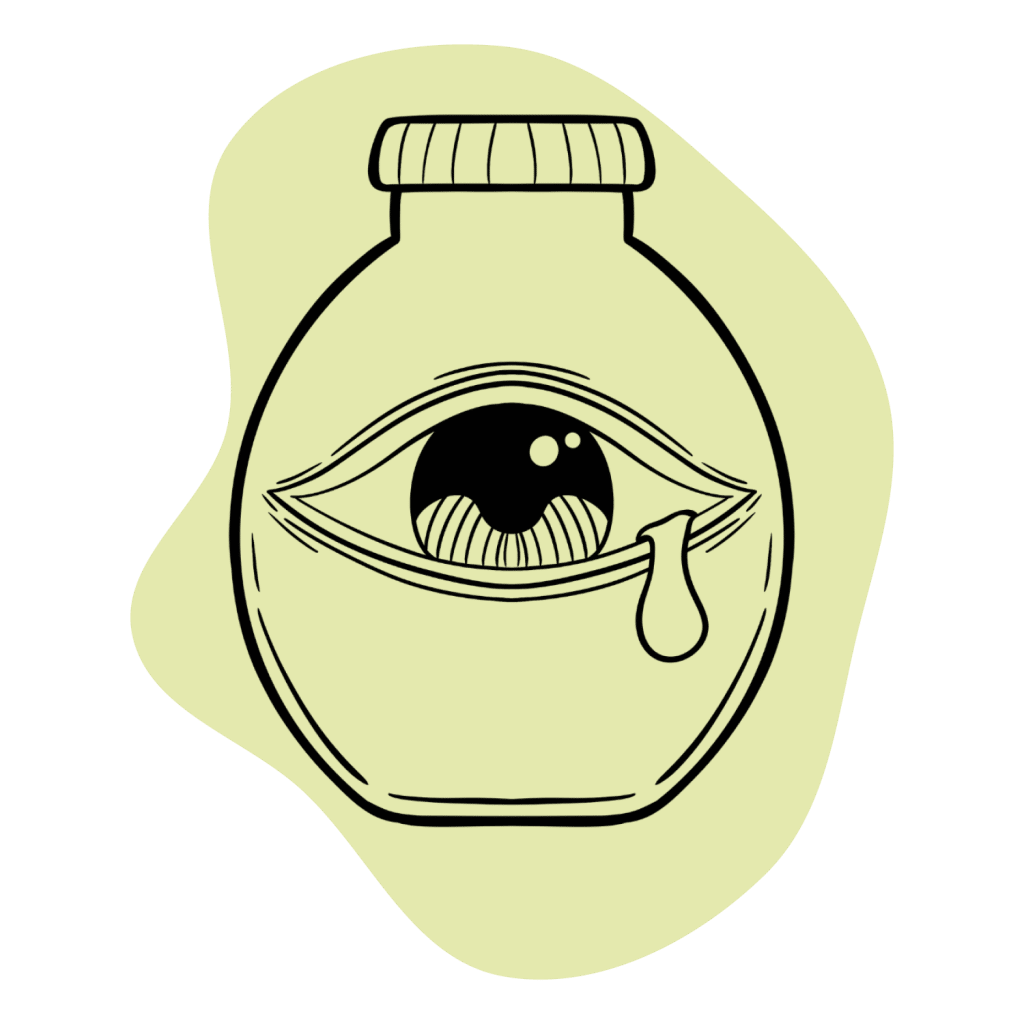
The ever-present risk of physical dependence has led to some big changes in the way doctors prescribe benzodiazepines. It’s now standard practice for doctors to limit both the effective dosage and the duration of treatment as much as possible. These two factors have been found to have the most influence on the formation of physical dependence, so, in essence, doctors are forced to play a balancing game between the effectiveness of treatment and the likelihood of dependence.
Benzodiazepine Harm Reduction Tips
- 🥣 Don’t mix — Mixing benzodiazepines with other depressants (alcohol, GHB, phenibut, barbiturates, opiates) can be fatal.
- ⏳ Take frequent breaks or plan for a short treatment span — Benzodiazepines can form dependence quickly, so it’s important to stop using the drug periodically.
- 🥄 Always stick to the proper dose — The dosage of benzos can vary substantially. Some drugs require 20 or 30 mg; others can be fatal in doses as low as 3 mg.
- 💊 Be aware of contraindications — Benzodiazepines are significantly more dangerous in older people or those with certain medical conditions.
- 🧪 Test your drugs — If ordering benzos from unregistered vendors (online or street vendors), order a benzo test kit to ensure your pills contain what you think they do.
- 💉 Never snort or inject benzos — Not only does this provide no advantage, but it’s also extremely dangerous. Benzos should be taken orally.
- 🌧 Recognize the signs of addiction — Early warning signs are feeling like you’re not “yourself” without the drug or hiding your habits from loved ones.
- ⚖️ Understand the laws where you live — In most parts of the world, benzodiazepines are only considered legal if given a prescription by a medical doctor.
- 📞 Know where to go if you need help — Help is available for benzodiazepine addiction; you just have to ask for it. Look up “addiction hotline” for more information about where you live. (USA: 1-800-662-4357; Canada: 1-866-585-0445; UK: 0300-999-1212).
Nortetrazepam Drug Interactions
The number one drug combination to avoid for those on a benzodiazepine treatment is the concomitant use of other compounds that can depress the CNS. These types of combinations have the effect of potentiating each other and often result in an exponentially more powerful effect that can put the user at risk of respiratory depression, the leading cause of death among drug overdoses.
Some examples of problematic depressant substances to avoid using with ketazolam include alcohol, GHB, phenibut, opiates, barbiturates, and other benzodiazepines.

There are also other types of drug combinations to watch out for. It’s important to ask your doctor before taking any benzodiazepine drug if you’re taking other prescription medications or recreational drugs.
Nortetrazepam Contraindications
Nortetrazepam is contraindicated for the following conditions/compounds:
- Hepatic impairments
- Known hypersensitivity to benzodiazepines
- Myasthenia gravis
- Pregnancy/lactation
- Psychiatric disorders
- Sleep apnea
Similar Benzodiazepines
Nortretazepam is both structurally and chemically related to other benzodiazepine compounds. Here are a few of them:
Tertrazepam
As the parent compound of nortetrazepam, tertrazepam is likely to hold a similar profile. When it comes to pharmacokinetics, though, things could be quite different. Without further research, we have no way of knowing. In any case, tertrazepam has an elimination half-life of eight to 24 hours and an estimated duration of effects of six to 10. Its pharmacology emphasizes anxiolytic, anticonvulsant, and antidepressant properties over the sedative and hypnotic and does so to a large degree.
Menitrazepam
There’s little information to be found about menitrazepam, but its chemical structure is highly similar to that of tertrazepam. The difference is the addition of a nitro group to the menitrazepam structure. Due to a lack of research, we can only speculate on how the structural alterations impact the effects.
Natural Alternatives to Benzodiazepines
It’s important that benzodiazepine patients who utilize these compounds for their anxiolytic, sedative, and hypnotic properties become aware of the many natural compounds that also possess these qualities. Not only are these natural, plant-based alternatives cheaper, but they’re also much safer and don’t require a prescription.

The major drawback to ditching a benzodiazepine prescription for a replacement like kratom or the kava plant is potency: natural compounds lack the strength of pharmacological ones. Another problem is the lack of natural alternatives that produce myorelaxant and anticonvulsant effects. Unfortunately, patients that utilize benzodiazepines for those reasons don’t have effective natural replacements.
References
- Baumgärtner, M. G., Cautreels, W., & Langenbahn, H. (1984). Biotransformation and pharmacokinetics of tetrazepam in man. Arzneimittel-forschung, 34(6), 724-729.
- Riss, J., Cloyd, J., Gates, J., & Collins, S. (2008). Benzodiazepines in epilepsy: pharmacology and pharmacokinetics. Acta neurologica scandinavica, 118(2), 69-86.

